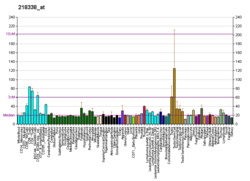Function
This gene is a homolog of the Drosophila polyhomeotic gene, which is a member of the Polycomb group of genes. The gene product is a component of a multimeric protein complex that contains EDR2 and the vertebrate Polycomb protein BMI1. The gene product, the EDR2 protein, and the Drosophila polyhomeotic protein share two highly conserved domains, named homology domains I and II. These domains are involved in protein–protein interactions and may mediate heterodimerization of the protein encoded by this gene and the EDR2 protein. [6]
Mutations in this gene have been associated to cases of primary microcephaly. [7]
This page is based on this
Wikipedia article Text is available under the
CC BY-SA 4.0 license; additional terms may apply.
Images, videos and audio are available under their respective licenses.




